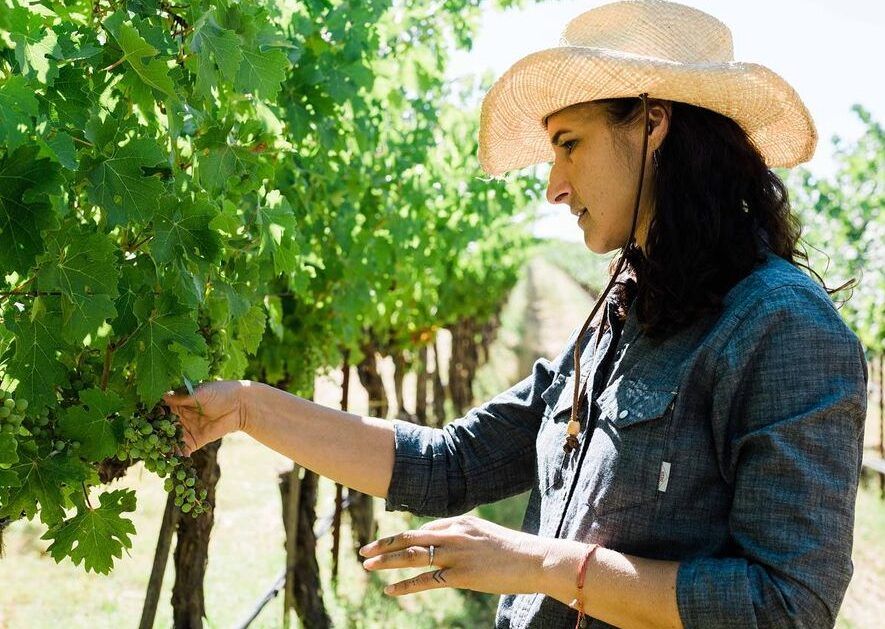“Small differences make a huge difference in the glass. You must pay attention, you cannot homogenise, everything is different from the irrigation, to the rootstock, to the vines,” says Quintessa winemaker Rebekah Wineburg.
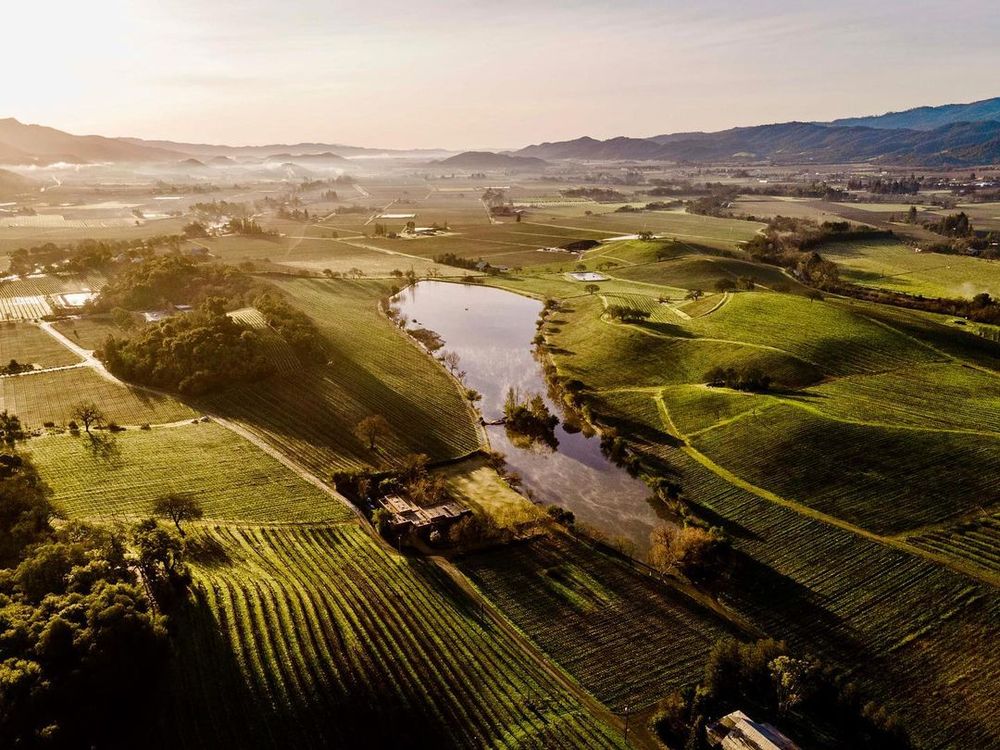
Dragon’s Lake sits at the heart of Quintessa’s patchwork quilt terroir
Napa’s context: always punching above its weight
Napa has seen boom and bust, the brutal massacre of indigenous peoples, conquistadors, Mexican rule, missions, gold rush, phylloxera, Prohibition, poverty, prosperity and peace. Freed slaves, film directors, 60’s stoners, tech billionaires and Chinese immigrants have all sought sanctuary here. Napa has always been a land of innovation and prospectors seeking something better.
Napa is a teeny, tiny, infinitesimal spec of land on the world wine production map, roughly a sixth the size of Bordeaux and a mere 30 miles long. It produces less than half a percent of the world’s wine on 43,000 acres. Yet it is staggeringly influential. Riskily located at the apex of the Pacific and North American tectonic plates, with one of the world’s coolest currents offshore and the Vaca and Mayacamas mountains either side, the climate is dry Mediterranean and, crucially, cold at night.
Napa has proved hugely susceptible to fashion, vinous offerings have been shaped by critics’ points, influential consultants, branding and general media noise. Plantings of Cabernet boomed after the presenter Morley Safer’s 60 Minutes Special on ‘The French Paradox’ in 1991. Similarly Sideways, a brilliant satire on the folly of male vanity, presaged a growth in Pinot plantings (and a reduction in Merlot). Today there is evidence of a more grounded metamorphosis, a lot more grounded actually as it’s focussed on terroir.
More and more of the valley is owned by corporations every year, Moët Hennessy Louis Vuitton, Gallo, Constellation and Treasury have all taken a juicy bite. And yet the pioneering spirit remains. Anyone can come to Napa and make wine if they are wealthy enough. To a point. Woe betide the rich would-be mono-cropper and his trusty axe – for today the valley is developing an ecological conscience. Walt Ranch and Mountain Peak are two recent casualties of the tide against expansion and a palpable passion for conservation. Critics say blocking winery developments will only foster more corporate ownership as litigation costs spiral … and they may have a point.
Napa is a name derived from Napato, a Southern Patwin indigenous Indian word which seemingly no one can translate. Conquistadors visited Alta California in 1542 and two hundred years later, under Mexican rule, Spanish missionaries settled and converted the unfortunate locals, thus alienating them from their hunter gatherer lifestyles and tragically infecting them with European diseases. The Gold Rush brought all manner of mercenaries too, none sympathetic to the locals who were essentially killed or enslaved. The Chinese immigrant population disappeared after the Chinese Exclusion Act of 1892 and the small African American population were not made welcome either.
Napa’s story is a human one and there is much we can learn from it, for with every fast step taken toward progress, it seems another was taken back. Californian missionaries instigated genocide, they also brought European grapes, predominantly Pais. The 1848 Californian Gold Rush brought both economic and population growth, fuelling local industry and a desire for commodities like wine. Then came Prohibition, sold as a sure way to bring wealth and prosperity to those downtrodden by the evils of drink – evangelists truly believed a lack of booze would bring positive social change and investment. But hard drinking increased, a lack of respect for law enforcement grew and organised crime developed capable syndicates.
Unintentional downsides of fast change have plagued Napa for centuries. HN1 root stock undermined the entire valley economy in the late 80s when phylloxera hit again, largely spread by floods. Long term, this forced replanting and enabled positive change through modernisation but it also fuelled a need for high returns, less diversity and intensive farming.
Today the Valley population are thinking very carefully about the choices they make and the long-term repercussions of their decisions, nowhere more so than at Quintessa. Indeed it was my meeting with winemaker Rebekah Wineburg in London last month that got me started on this Napa rant in the first place…
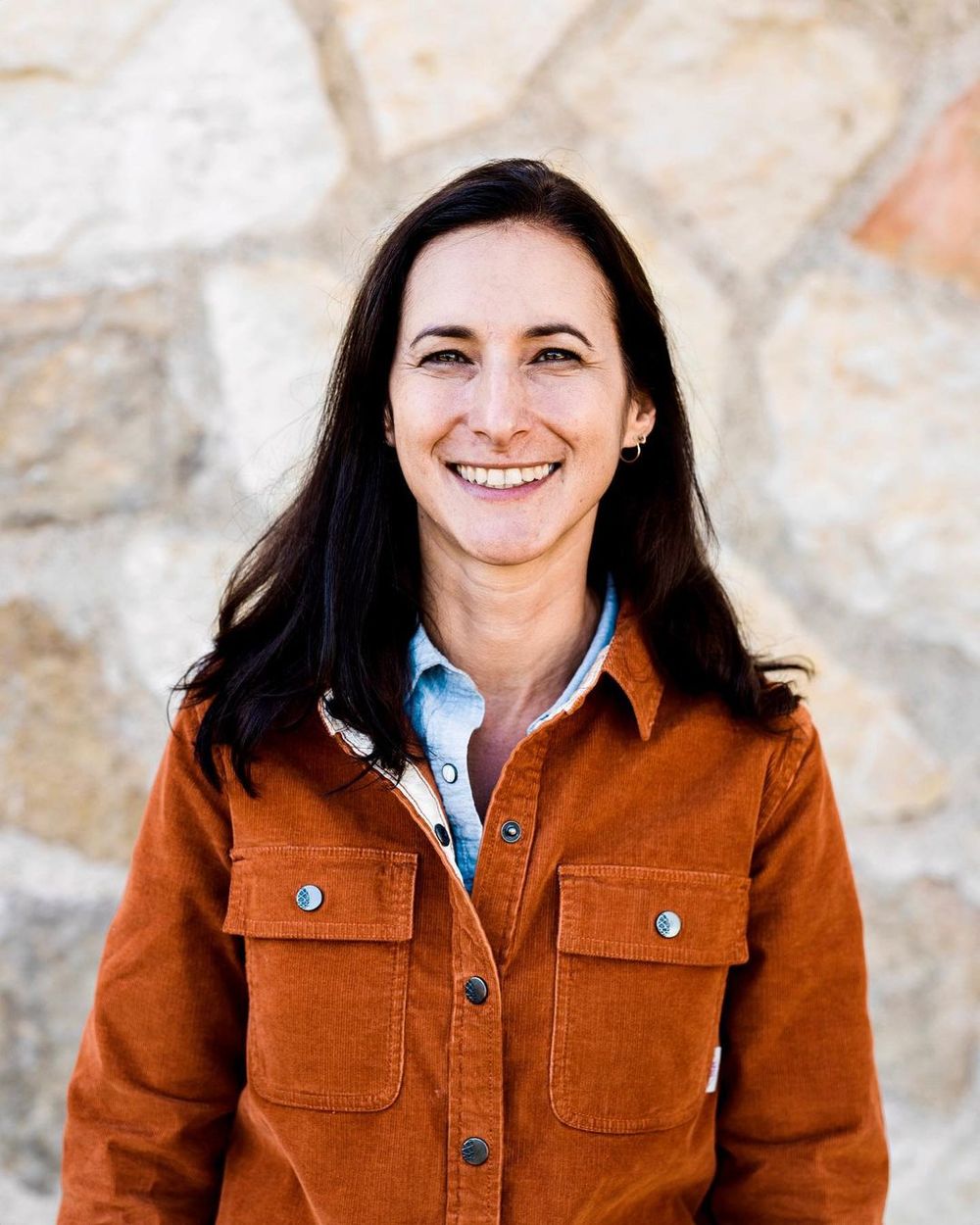
My brilliant career: Quintessa winemaker Rebekah Wineburg
An increasingly level playing field
Wineburg is not of farming stock; hailing from Washington, at 16 she visited Napa on a family holiday and conceived a secret desire to become a winemaker. Wineburg was intoxicated by the combination of science, farming, location and creativity this magical drink represented. The world might never have discovered her talent for wine were it not for the encouragement she received from her chemistry professor years later. This inspirational man named Dr Schwartz, turned her fantasy into a brilliant career by mapping a pathway from her chemistry and biology undergraduate degree to wine making. Crucially he tasted with her too.
Wineburg is not alone, but one of many female leaders in wine business born of her cohort – women who do not seek positive discrimination, but wish only for a level playing field on which to advance as the best candidate for the job. These are the latest pioneers to populate the valley. They are using their wits, grit and skill to gain access and get ahead.
“My generation is benefitting from the work of the women who came before us, they were the first generation of women winemakers here and they forged the way,” says Wineburg. “I believe that if you can’t see it, you can’t be it. It takes a very special person to want to do something when they don’t see anyone else that looks like them doing it already. That’s why the primary generation was and is so incredibly important. I am second generation and I benefitted from the pioneering spirit of the female first.”
“Many of my best girlfriends of the last 20 years have the most incredibly impressive wine careers; Remy Cohen is the CEO of Domaine Carneros, Helen Keplinger is winemaker at Keplinger Wines and has graced the cover of Wine Spectator, Jordan Fiorentini is the winemaker at Epoch Cellars. None of these women are from wine business families. Remy and I have no wine background and are living proof anything is possible.”
Quintessa – the making of a special estate
Quintessa is owned by the Huneeus family who hail from Chile, a country with a remarkably similar coastline to California’s. Cooled by the Humboldt current, bordered by the Pacific, graced with a mountainous coastline and positioned on three tectonic plates, the South American, the Nazca and the Pacific, there are many obvious parallels to be drawn. Agustin Huneeus was an early investor in what was then a small winery named Vina Concha y Toro. He was instrumental in its growth and subsequent success and by the age of 27 he was also CEO.
Valeria Huneeus is a microbiologist, she came across what was to become Quintessa in 1989 whilst looking for a property that could equal the great estates of the world, it was she who paved the way for Rebekah Wineburg. Virgin Rutherford land, never before planted – not even with other crops – this was a chance too good to miss and Valeria realised she’d discovered something very special. Quintessa is very complex geographically, heavy with oak and bordering the Napa river, it’s a patchwork of soils that map ancient, complex geological events.
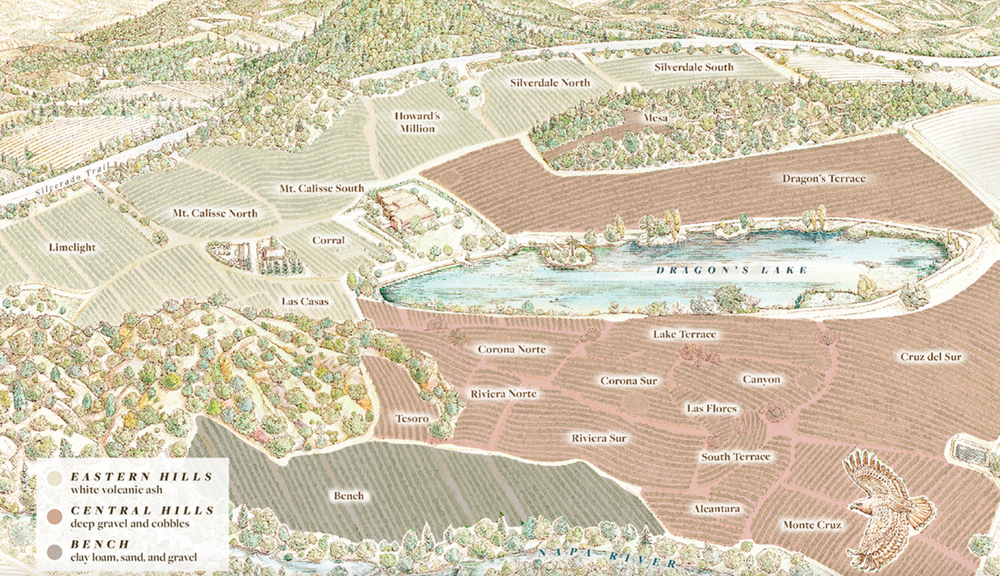
Quintessa: doing Burgundy in Napa
She and Agustin planted 135 acres of a possible 280 taking care not to fell a single tree. Valeria is a true regenerative pioneer; she sees herself as a steward of the land they farm. They planted on slopes, working with the natural contours that trace the Waca Mountain Range. In 1990 this was still possible as the slope ordinance prohibiting planting on gradients greater than 30 degrees had not yet been passed. Biodynamic from the start, this was land that had never seen pesticides and they were determined to keep it that way. They even hired eccentric, famed, charismatic terroir guru Pedro Parra – a true purist, Parra is all about expressing terroir and is fiercely against industrial winemaking and the dystopian landscape he believes it creates. All this effort is clearly hitting the spot. It’s pretty rare for a winery to sell all their wines via allocation but a chosen few do and Quintessa is one of them.
Consultant Pedro Parra explains: “We are doing Burgundy in Napa, in that we look at the microclimate and we utilise the terroir expression, the property is so diverse that we must use many, many small tanks to express these individual terroirs. We are performing ‘terroir liposuction’ by removing the horrible terroir and taking the very best and removing the ka ka. Small differences make a huge difference in the glass. You must pay attention, you cannot homogenise, everything is different from the irrigation, to the rootstock, to the vines – all are tailored to the individual spot. All of the fruit used in Quintessa is estate grown and there is no second wine. The wine expresses the property.”

Rodrigo Soto
Rodrigo Soto, estate director adds, “I had to question where I could add value to Quintessa, how do we find another layer of understanding. We tend to clear the land, take away rocks because they bother our tractors. There are practicalities but they can create generalisation and that is the opposite of what we seek.”
Napa and the pioneering spirit
Like it or not the New World has led the way in winemaking and wine technology. Even innovations as divisive as wine scoring, (born of the Wine Advocate and The Wine Spectator) led to a democratisation of wine that opened the door to new drinkers extremely successfully. Much like influencing today it offered an easy pathway in. Of course scoring is entirely subjective and therefore should be taken with a pinch of salt, one man’s tempting caviar, is another’s dubious fishy egg.
Then there’s tourism – no one did wine tourism like the yanks 40 years ago. They even inspired London born octogenarian Cliff Roberson to open the UKs first urban winery in Fulham. Roberson worked a long stint in 60s New York for Sherry Lehmann and later Alexis Lichine. Open cellar door policy, now ubiquitous, is entirely New World inspired – the tantalus-like closed doors of the leading French châteaux in the 70s and 80s have been well documented.
Finally the tech billionaires – leaders of the herd, they took their wedge and made wine sexy. Napa is less than a hundred miles from the Google mothership but way before Google came Silicon Valley – closer than Napa was Santa Cruz where 60s tech boffins released their pent-up virtual stress getting dirty and earthy in the vines. Tech is something that has influenced Napa hugely and I’m not talking Apple. Low intervention wine it might be but I’ll wager the local lab work in Napa is amongst the most advanced on the planet. 18th century winemaking backed by 21st century tech, nothing wrong with that. Add to that the huge plethora of geological mapping kit and low intervention starts to look less rustic but no less impressive.
Napa is still home to wild pioneers and radicals, entry may still be acquired on wits alone. This is the place religious outsiders founded monasteries, a day’s walk apart. This is the place men broken by a gold rush settled and resorted to making wine. This is a place that saw its vineyards annihilated by phylloxera in the late 80s and where stoner tech junkies came to dirty their hands. And if you look hard enough there is good evidence a radical pioneering spirit remains. Both in the women that work there today and in the campaigners speaking up for the land. This is a place where man’s folly has induced dire suffering, even genocide. And it’s still a place the world might learn much from.
So how are the Quintessa wines tasting?
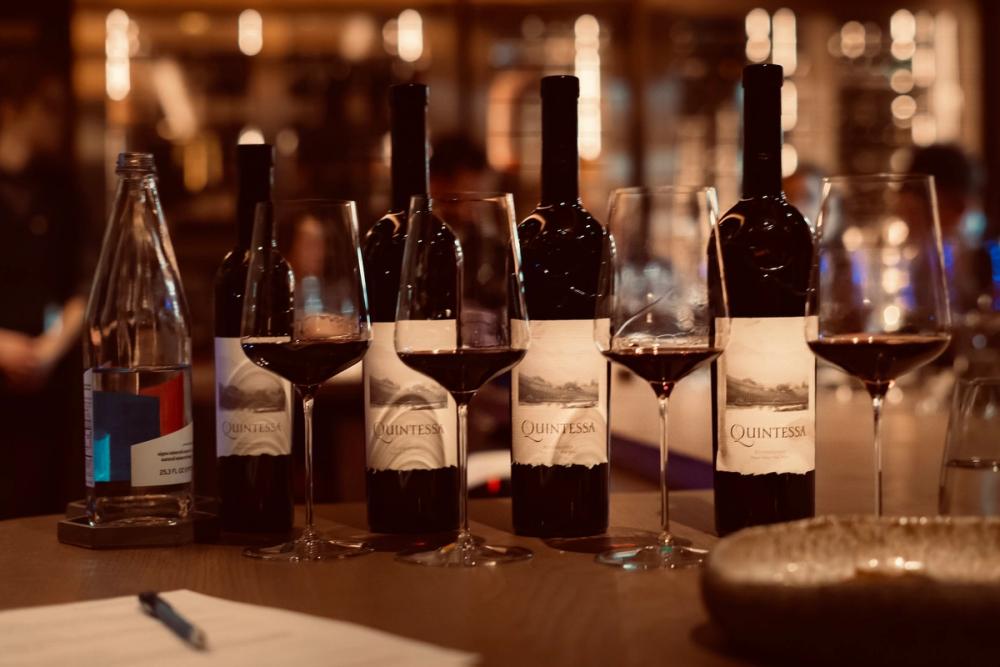
Line-up at Quintessa tasting held at Mayfair’s Humo
Quintessa 2010 – Rutherford, Napa Valley
Cabernet Sauvignon, Merlot, Cabernet Franc, Petit Verdot, Carménѐre
Damp woodsmoke, salted plum, iodine, rust and blood; deliciously savoury, dense with ripe dark fruit and sweet supple tannins.
Quintessa 2014 – Rutherford, Napa Valley
Cabernet Sauvignon, Merlot, Cabernet Franc, Petit Verdot, Carménѐre
Sweetly poised ripe fruit and florals, fresh moist mouth-watering acidity, violets meet earth meet cedar meet pleasure. Lovely.
Quintessa 2015 – Rutherford, Napa Valley
Cabernet Sauvignon, Merlot, Cabernet Franc, Petit Verdot, Carménѐre
Voluptuous, deep, dark and stimulating, with muti-dimensional layers of dark fruit, earth, bitter chocolate, high church incense, savoury Tuscan herbs and gorgeously moreish tannins.
Quintessa 2020 – Rutherford, Napa Valley
86.5% Cabernet Sauvignon, 7% Cabernet Franc, 4.5% Carmenere, 2% Petit Verdot
This wine exudes class, mental Mogadon in the finest sense; it is deep dark sensual and calming. Luxurious and full yet tempered by savoury herbal notes the like of which might comfortably grace the baldpate of Caesar. This wine promises ever-lasting pleasure, deep dark fruit, perfectly piosed acidity, ridiculously moreish tannins, structure and a succulent finish, the gift that’ll keep on giving for a long time to come.
Photos © mattmorrisfilms ©quintessa ©lissegarnett
